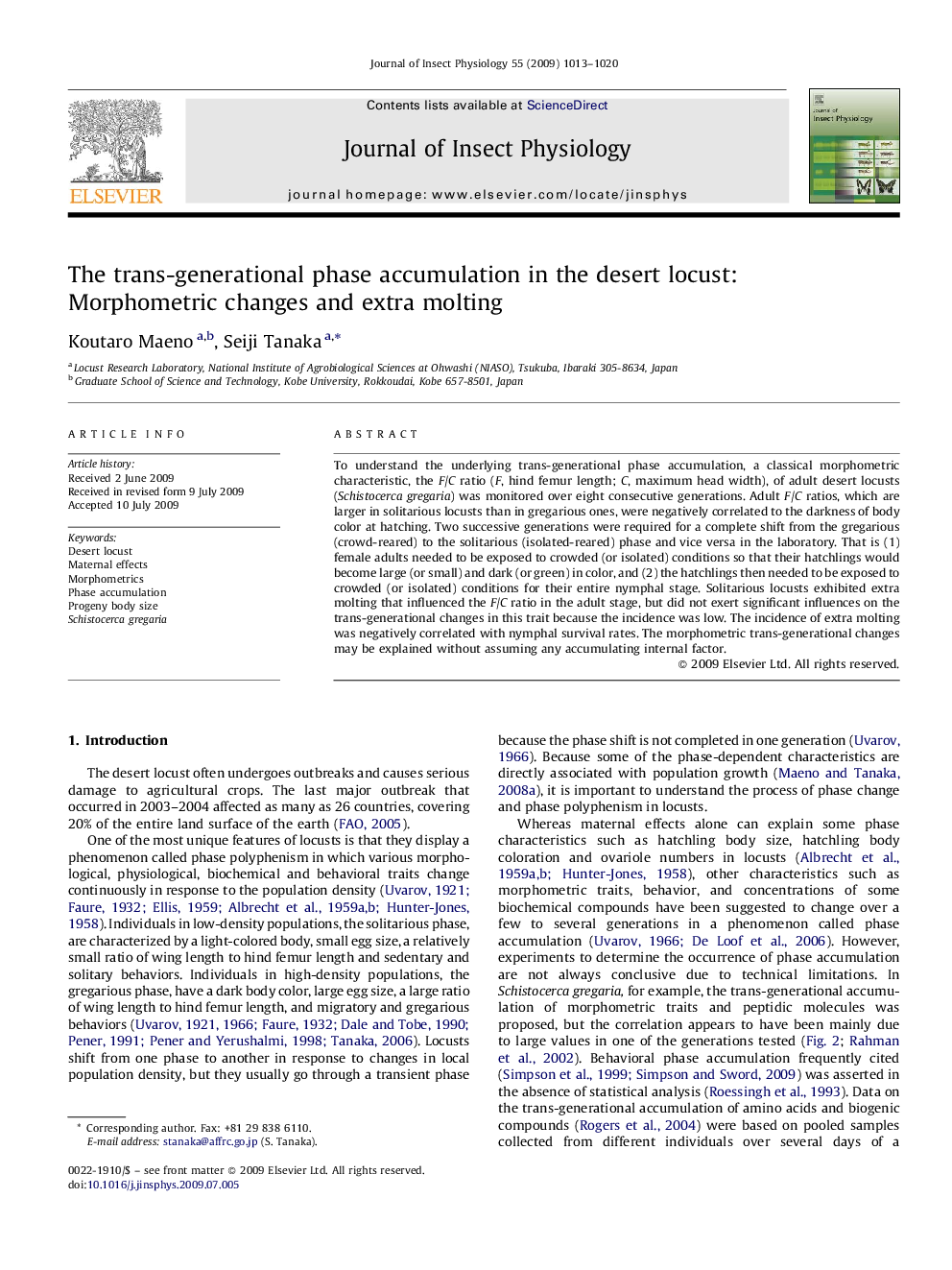| کد مقاله | کد نشریه | سال انتشار | مقاله انگلیسی | نسخه تمام متن |
|---|---|---|---|---|
| 2840882 | 1165365 | 2009 | 8 صفحه PDF | دانلود رایگان |

To understand the underlying trans-generational phase accumulation, a classical morphometric characteristic, the F/C ratio (F, hind femur length; C, maximum head width), of adult desert locusts (Schistocerca gregaria) was monitored over eight consecutive generations. Adult F/C ratios, which are larger in solitarious locusts than in gregarious ones, were negatively correlated to the darkness of body color at hatching. Two successive generations were required for a complete shift from the gregarious (crowd-reared) to the solitarious (isolated-reared) phase and vice versa in the laboratory. That is (1) female adults needed to be exposed to crowded (or isolated) conditions so that their hatchlings would become large (or small) and dark (or green) in color, and (2) the hatchlings then needed to be exposed to crowded (or isolated) conditions for their entire nymphal stage. Solitarious locusts exhibited extra molting that influenced the F/C ratio in the adult stage, but did not exert significant influences on the trans-generational changes in this trait because the incidence was low. The incidence of extra molting was negatively correlated with nymphal survival rates. The morphometric trans-generational changes may be explained without assuming any accumulating internal factor.
Journal: Journal of Insect Physiology - Volume 55, Issue 11, November 2009, Pages 1013–1020